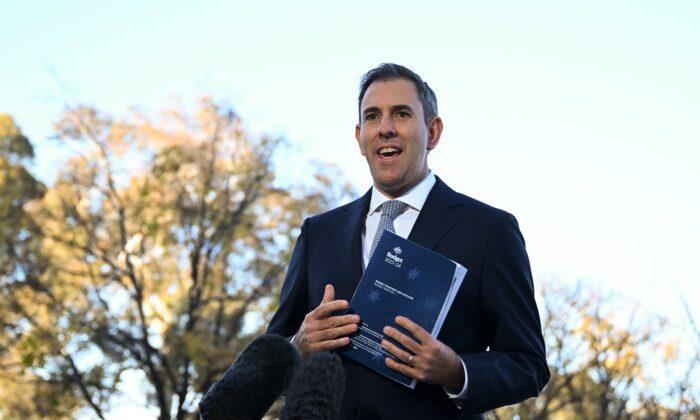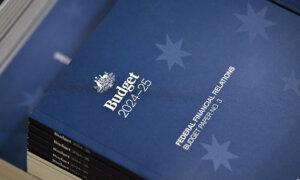Energy bill relief, tax cuts for every taxpayer, a cap on medicine prices, and support for renters have led the Labor government’s plans to ease cost-of-living pressures.
The federal budget, announced on May 14, delivers $3.5 billion (US$2.25 billion) in new energy bill relief, with every Australian household receiving an energy rebate of $300 (US$198) and one million small businesses getting a $325 rebate.
For a family with a combined income of around $130,000—their combined tax cut will be over $2,600 a year or about $50 a week.
Meanwhile, the Labor government will extend eligibility for the higher rate of JobSeeker payments to those with a partial capacity to work up to 14 hours per week.
The government also will freeze the maximum cost of prescriptions under the Pharmaceutical Benefits Scheme for five years, with Treasurer Jim Chalmers promising that in 2024-25, “no one will pay more than $31.60.”
The budget includes $3 billion in funding towards cheaper medicines and the community pharmacies that distribute them.
Cost caps of $7.70 will also be in place for five years for pensioners and concession holders.
Renters will receive further relief, with those on rent assistance getting an extra $19 per fortnight.
The government will inject another $1.9 billion to increase the maximum rates of Commonwealth Rent Assistance by a further 10 percent, following the 15 percent increase delivered in the previous budget.
This is the first time there have been consecutive increases in rent assistance in more than 30 years.
Budget Aims To Help Australians Doing It Tough: Treasurer
In announcing a second-straight budget surplus of $9.3 billion, Mr. Chalmers said the measures had been “carefully designed to take pressure off Australians doing it tough and to directly reduce inflation.”He noted that annual inflation has more than halved from its peak in 2022, but people were still “under the pump.”
“This uncertainty combines with cost of living pressures and higher interest rates to slow our economy, with growth forecast to be just 1.75 percent this financial year and 2 percent next.”
However, he added that Australia was among the “best-placed economies” to manage these economic uncertainties.
Budget Fails To Address Cost Of Living Crisis: Opposition
However, Shadow Treasurer Angus Taylor said the budget did “nothing to help Australians get ahead and to restore their standard of living” and accused the government of “focusing on the wrong priorities at a time when Australians are doing it tough.”“Australians know that despite the treasurer’s spin, prices have increased by nearly 10 percent with increases for many essential items well beyond that: housing is up 12 percent, rents are up 12 percent, insurance up 26 percent, electricity is up 18 percent, and gas is up 25 percent.
“In these uncertain economic times, Australians needed a back-to-basics economic agenda.”
Mr. Taylor argued that Australians need a budget that addresses the source of inflation, supports small businesses, helps young Australians into a home, and restrains spending.
He added that the budget needs to deliver a “structural surplus, not a windfall surplus.”
“Labor has fuelled the housing and rental crisis with unprecedented immigration at a time when housing approvals are at an 11-year low,” he said.
“At a time when the Budget forecasts unemployment to rise, the Albanese government is increasing the size of the public service by an astonishing 36,000 additional bureaucrats in Canberra.”
The Business Council of Australia said the budget takes positive steps to boost competitiveness, while the Australian Chamber of Commerce and Industry said the spending plans raised questions about taming inflation in the long term.




